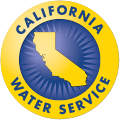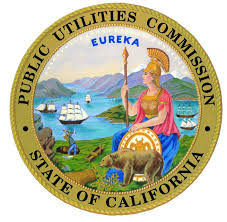At separate hearings on April 25, 2017, California Water Association (CWA) representatives testified in support of bills implementing Governor Jerry Brown’s April 7 Executive Order B-40-17, “Making Water Conservation a California Way of Life,” and requiring the State Water Resources Control Board (SWRCB) to promulgate regulations on the testing and certification of backflow prevention assembly testers.
Water-Use Efficiency Bills
Beginning with a special hearing of the Assembly Water, Parks and Wildlife Committee (WP&W), CWA Executive Director Jack Hawks expressed the association’s support for two bills introduced by Assembly Member Blanca Rubio (D-West Covina), AB 968 and AB 1654. Both bills would implement the provisions in “Making Conservation a California Way of Life,” the final report issued by the Brown Administration on April 7. calling for permanent water-use efficiency and conservation regulations.
AB 968 would set new water-use efficiency targets for water suppliers to achieve by 2025, in the form of annual aggregate water consumption limits equal to the sum of retail indoor and outdoor usage, plus other variables, including water loss and water-use variances that are particular to a given utility’s service area. The bill would make water-use efficiency a way of life in California in a manner that accounts for local conditions, while also recognizing and incentivizing sustainable, balanced approaches to water management. AB 968 would establish a collaborative stakeholder process to continue improvement in water-use efficiency beyond 2025.
AB 1654 would enhance existing reporting and drought response requirements related to water shortage contingency analyses. Under the bill, urban retail water suppliers (“water suppliers”) would report annually to the Department of Water Resources on the status of their water supplies for that year and whether supplies will be adequate to meet projected customer demand. If supplies are not adequate to meet demand, the water supplier would be required to implement the appropriate responses, as described in their water shortage contingency analysis. AB 1654 also would prohibit a water supplier from being required to reduce its use or reliance on any water supply available beyond the steps specified in its water shortage contingency analysis, thereby protecting water suppliers’ and their customers’ investments in resilient water supply sources.
CWA joined the Association of California Water Agencies (ACWA), the California Municipal Utilities Association (CMUA), the California Special Districts Association, the California-Nevada Section of the American Water Works Association (CA-NV AWWA) and CalDesal in separate coalition letters on April 14 expressing support for AB 968 and AB 1654. Both bills passed the WP&W Committee and will be heard next in the Assembly Appropriations Committee.
Backflow Prevention/Public Health Bills
Along with ACWA, CMUA and CA-NV AWWA, CWA is a co-sponsor of AB 1671, a bill introduced by Assembly Member Anna Caballero (D-Salinas) that would require the SWRCB to complete revisions to the cross-connection control regulations contained in the California Code of Regulations (CCR) Title 17 by January 1, 2020.
Backflow prevention devices are used to prevent contaminated fluids from entering a utility’s drinking water supply system. This is a critical public health responsibility because a broken or failed backflow system can easily result in contamination of a public water supply leading to a public health incident. Accordingly, the proper testing of backflow prevention devices is crucial to the prevention of backflow contamination and is a cornerstone of a properly managed cross-connection control program.
To ensure that testing and maintenance of backflow prevention devices are performed by qualified persons, California law authorizes local health officers to maintain programs for certification of backflow prevention device testers. Additionally, regulation requires backflow preventers to be tested by persons who have demonstrated their competency in the testing of these devices to the local water utility or local health agency. Because the water system is responsible for the damage caused by such a failure, public water systems are responsible for hiring testers who have “demonstrated their competency.”
The core regulatory requirements for backflow prevention are contained in CCR Title 17 and were promulgated in 1987. The most recent guidance manual was written in 1988. These outdated regulations have resulted in uncertainty for the backflow prevention device testers and those who hire them. Updating the cross-connection control regulations with the participation and input of drinking water industry representatives, as intended by AB 1671, would result in improved guidance on the competency requirements for backflow prevention device testers.
The bill was heard April 25, 2017, in the Assembly Environmental Safety and Toxic Materials Committee, and it passed unanimously. Golden State Water Company’s Manager of Water Quality Dawn White and Chair of CWA’s Water Quality Committee represented CWA at the hearing and testified in support of AB 1671. The bill will be heard next in the Assembly Appropriations Committee later in May.





